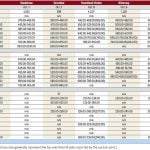Western Canadian feeder cattle prices appear to have stabilized for the time being. Auction market volumes are declining in line with the seasonal tendency and demand is sufficient to sustain the current price structure.
Fed cattle prices were down as much as $3 per hundredweight (cwt), which continues to weigh on the feeder complex. Alberta packers were buying cattle in the range of $107-$109/cwt.
Barley prices were up another $5 per tonne, touching $260 delivered southern Alberta.
Further deterioration in feedlot margins has tempered buying interest for replacement cattle. Pen conditions are quite poor with the recent rains and feedlot operators don’t want to bring in cattle under the current weather environment.
Read Also

Klassen: Cash feeder market divorces from futures market
For the week ending October 11, Western Canadian yearling markets traded $8/cwt higher to $5/cwt lower compared to seven days…
A small group of exotic steers weighing 640 pounds sold for $156/cwt, landed southern Alberta feedlot. A medium-flesh group of Simmental steers averaging 755 lbs. sold for $143/cwt. Steers in the weight range of 900-1,000 pounds averaged $125, landed southern Alberta.
Choice wholesale beef prices reached up to $190/cwt, the highest level since early March. Packing margins have improved and the weekly slaughter pace should pick up over the next couple weeks. Feedlots on both sides of the border should become more current with production. However, beef supplies will also increase and limit further upside in wholesale prices. Retail beef prices have softened but retail movement has not improved.
U.S. consumer spending increased has increased by a meagre 0.3 per cent due to limited disposable income. People save money or pay off bills after periods of heavier spending, which has tempered beef demand.
Look for feeder prices to consolidate but there may be further weakness if fed prices continue to grind lower.















